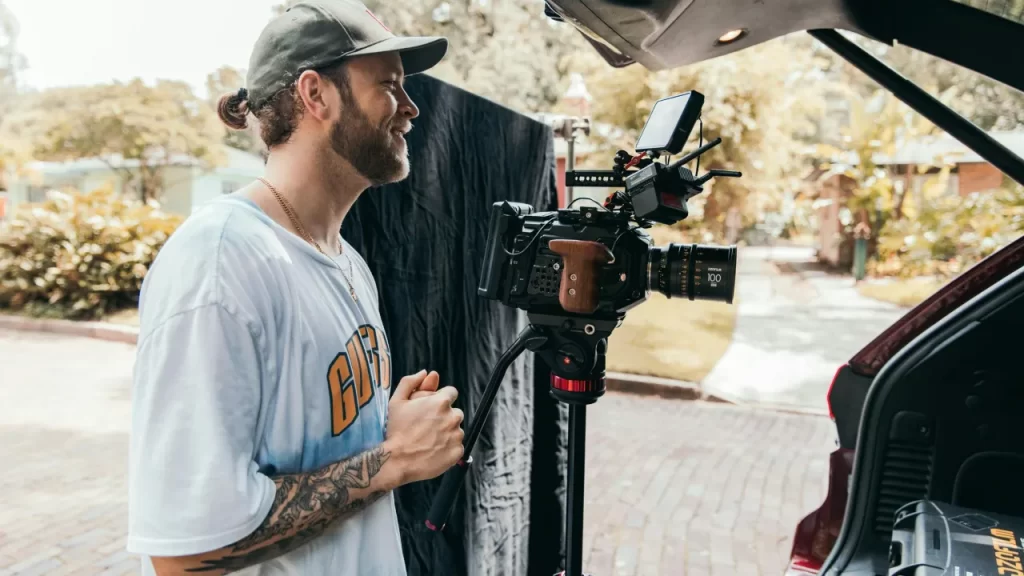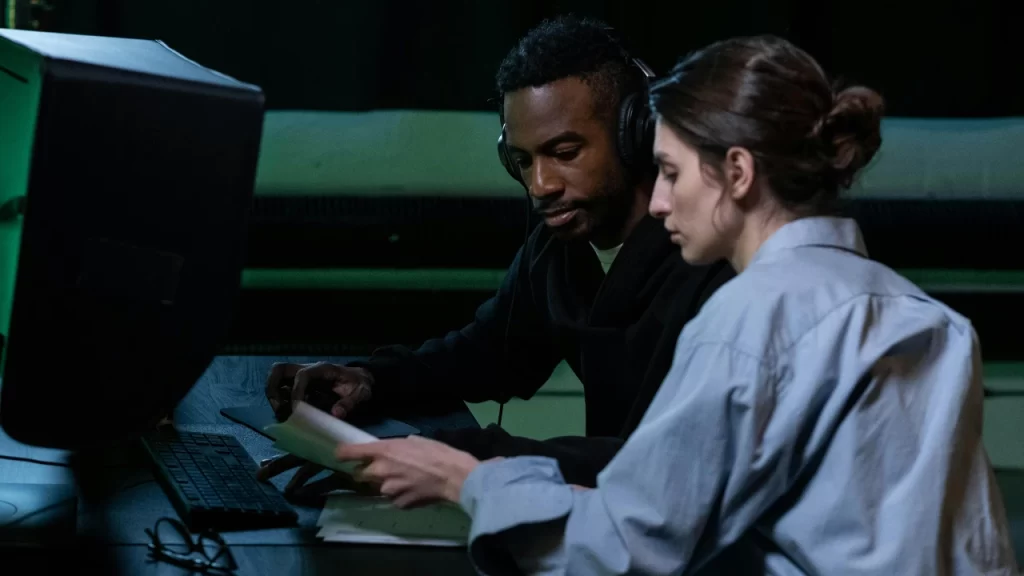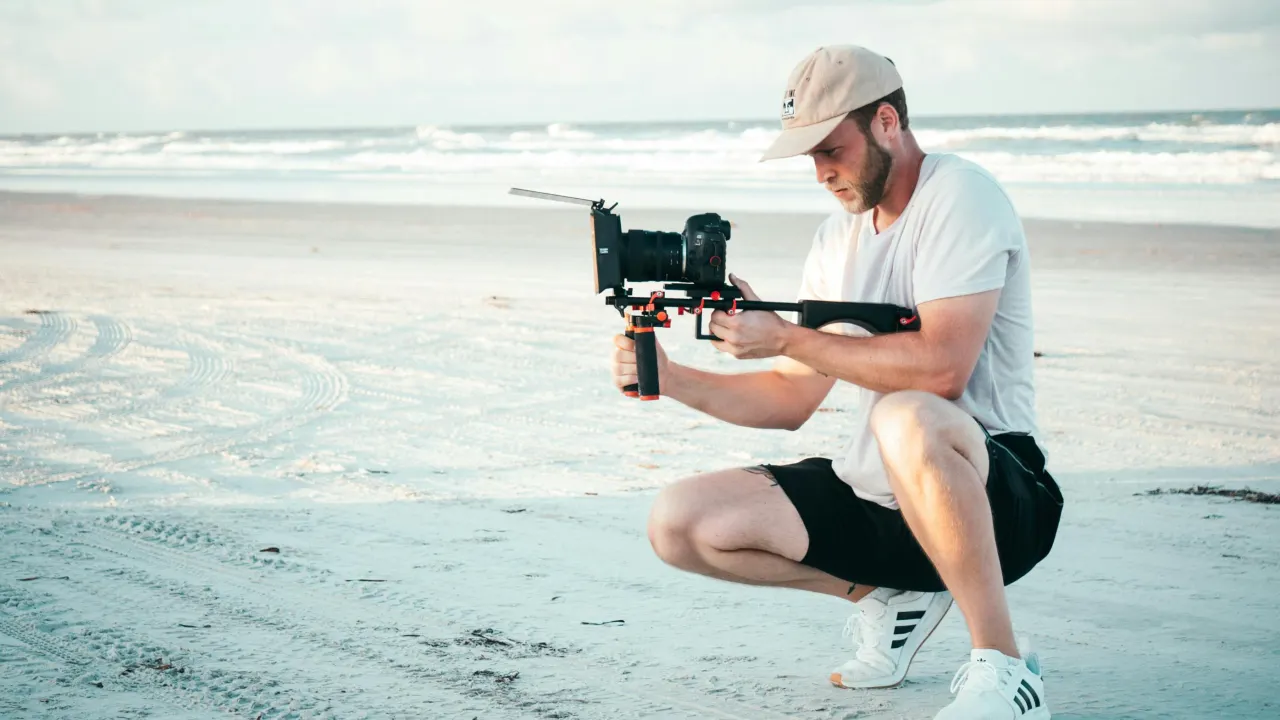Creating a travel video documentary is an exciting and fulfilling endeavor. It allows you to explore new destinations, immerse yourself in different cultures, and share those experiences with a broader audience. However, how to make a travel video documentary requires careful planning, the right equipment, and an understanding of both storytelling and technical aspects. This comprehensive guide will walk you through the process, ensuring that your travel documentary is not only visually stunning but also compelling and informative.
Planning Your Travel Documentary
Choosing a Theme or Storyline
The first step in how to make a travel video documentary is to choose a central theme or storyline. This is the foundation upon which your entire documentary will be built. Your theme could revolve around cultural experiences, adventure, history, or even the personal transformation that travel brings. The key is to select a theme that resonates with you and that you believe will engage your audience.
How to Decide on a Central Theme or Message
Deciding on a central theme requires introspection and research. Ask yourself what excites you about the destination and what unique perspective you can offer. Your theme should be specific enough to guide your narrative but broad enough to allow for flexibility during filming. For example, instead of a general theme like “Exploring France,” you might choose “The Art of French Cuisine” or “Historic Villages of Provence.” These themes provide a clear direction for your documentary while allowing room for creative exploration.
Researching Your Destination and Culture
Research is a crucial part of how to make a travel video documentary. Understanding the culture, history, and geography of your destination will help you create a more authentic and respectful portrayal of the place and its people. Dive into books, documentaries, and travel blogs to gather as much information as possible. This research will inform your script, shot list, and even your interactions with locals.
Pre-Production Planning
Pre-production is where your documentary starts to take shape. This stage involves budgeting, creating a shot list, and scouting locations. Effective pre-production planning can save you time and money while ensuring that you capture all the footage you need.
Budgeting for Travel and Equipment
Budgeting is a vital aspect of how to make a travel video documentary. Your budget should cover travel expenses, accommodation, food, equipment, and any unforeseen costs that might arise. Consider working with a documentary video production company if you need additional funding or resources. Proper budgeting ensures that you have the financial means to complete your project without cutting corners.
Creating a Shot List and Storyboard
A shot list and storyboard are essential tools for organizing your shoot. Your shot list should include all the key scenes you want to capture, from interviews to establishing shots. A storyboard, on the other hand, provides a visual representation of how these scenes will come together. This planning phase is critical in how to make a travel video documentary because it helps you visualize the final product and ensures that you don’t miss any crucial shots.
Scouting Locations in Advance
Location scouting is another crucial step in pre-production. Visiting your locations beforehand allows you to plan your shots, identify potential challenges, and obtain necessary permissions. It’s also an opportunity to discover hidden gems that might not have been apparent during your initial research. Scouting locations in advance is particularly important in how to make a travel video documentary, where the environment plays a significant role in the narrative.
Essential Equipment for Travel Documentary
The equipment you choose can make or break your travel documentary. From cameras to audio gear, selecting the right tools is crucial to capturing high-quality footage and sound.
Cameras and Lenses
Choosing the right camera and lenses is a crucial part of how to make a travel video documentary. Your camera should be versatile, reliable, and capable of shooting in various conditions. Similarly, your lenses should cover a range of focal lengths to handle different types of shots.
Recommended Cameras for Different Types of Shots
For wide shots, a camera with a wide-angle lens is ideal. It allows you to capture expansive landscapes and dramatic scenes. For interviews or close-ups, a camera with a prime lens offers excellent depth of field and image quality. Mirrorless cameras are popular among travel documentarians because they are lightweight, compact, and offer professional-grade quality.
Choosing the Right Lenses for Travel
Your lens selection should be based on the types of shots you plan to capture. A versatile zoom lens is invaluable for travel as it covers a range of focal lengths, reducing the need to carry multiple lenses. However, prime lenses, known for their sharpness and fast apertures, are excellent for low-light situations and creating a cinematic look.
Audio Gear
Good audio is just as important as good visuals in how to make a travel video documentary. High-quality sound captures the ambiance of a location and ensures that interviews are clear and professional.
Importance of Capturing High-Quality Sound
Sound quality can significantly impact the viewer’s experience. Poor audio can distract from the visuals and weaken the overall impact of your documentary. Invest in a quality microphone and audio recorder to ensure that your sound is crisp and clear. This is particularly important for interviews and capturing natural sounds like waves, wind, or street noise.
Best Microphones and Audio Recorders for Travel
Lapel microphones are great for interviews because they are unobtrusive and capture clear dialogue. Shotgun microphones are ideal for capturing ambient sound and can be mounted on your camera. An external audio recorder provides better sound quality than the built-in microphones on most cameras. When considering how to make a travel video documentary, lightweight and portable audio equipment should be a priority.
Accessories
Accessories are often overlooked but are essential components in how to make a travel video documentary. They include tripods, gimbals, drones, and storage solutions that can enhance the quality of your footage.
Must-Have Gear: Tripods, Gimbals, Drones, and Storage Solutions
A sturdy tripod is essential for stable shots, especially in low-light conditions. Gimbals help create smooth, cinematic camera movements, while drones offer unique aerial perspectives that can elevate the production value of your documentary. Finally, ample storage solutions, such as high-capacity SD cards and portable hard drives, ensure that you never run out of space during your shoot.
Portable and Lightweight Equipment for Travel
When filming on the go, portability is key. Choose equipment that is lightweight and easy to carry, especially if you’ll be traveling to remote or difficult-to-reach locations. Compact cameras, foldable drones, and collapsible tripods are excellent choices for how to make a travel video documentary.

Filming on Location
Filming on location is where the magic happens. It’s your opportunity to capture the essence of the place you’re documenting and bring your story to life.
Capturing Authentic Moments
Authenticity is at the heart of how to make a travel video documentary. Capturing genuine, unscripted moments will make your documentary more relatable and impactful.
Tips for Shooting Candid and Natural Scenes
To capture authentic moments, blend into your surroundings and observe without interfering. Use a zoom lens to shoot from a distance, allowing your subjects to act naturally. Patience is key; sometimes the best moments happen when you least expect them.
How to Interact with Locals and Gain Their Trust
Building trust with locals is essential for capturing genuine interactions. Approach people with respect and curiosity, and explain your project clearly. Often, spending time with your subjects without a camera before filming can help them feel more comfortable, resulting in more authentic footage.
Techniques for Stunning Cinematography
Cinematography is a powerful tool in how to make a travel video documentary. By mastering composition, lighting, and camera movement, you can create visually stunning footage that enhances your storytelling.
Using Composition, Lighting, and Camera Movement to Enhance Visual Storytelling
Composition involves framing your shots in a way that draws the viewer’s eye to the subject. The rule of thirds, leading lines, and symmetry are all techniques that can improve your composition. Lighting is equally important; natural light is often the best choice, but understanding how to manipulate light using reflectors or artificial lights can dramatically improve your shots. Camera movement, whether it’s a slow pan or a dynamic tracking shot, adds depth and interest to your footage.
Capturing B-Roll Footage and Establishing Shots
B-roll footage is essential for setting the scene and providing context. Establishing shots, such as wide shots of a cityscape or a close-up of local food being prepared, help immerse the viewer in the location. When learning how to make a travel video documentary, capturing diverse B-roll footage will give you more options during editing and help create a cohesive narrative.
Challenges of Filming While Traveling
Filming on location presents unique challenges, from unpredictable weather to time constraints. Being prepared and adaptable is key to overcoming these obstacles.
Dealing with Weather, Lighting Conditions, and Unpredictable Situations
Weather can change rapidly, affecting lighting and overall shooting conditions. Always have a backup plan and consider carrying weatherproof gear. If natural light is insufficient, knowing how to use portable lighting effectively is crucial. Additionally, being flexible with your schedule allows you to take advantage of unexpected opportunities or adjust to challenges.
Managing Time and Balancing Filming with Travel Experience
Balancing the need to film with the desire to experience the location can be difficult. Prioritize your shot list but also allow time to enjoy the journey. This balance is essential in how to make a travel video documentary because the genuine experiences you have will inform and enrich your storytelling.
Post-Production Process
Post-production is where your documentary comes together. Editing, sound design, and color grading all play crucial roles in shaping the final product.
Organizing Footage and Audio
Effective organization is crucial in how to make a travel video documentary. Sorting and labeling your footage and audio files during and after the trip will save you time during editing.
Best Practices for Organizing Files During and After the Trip
Use a consistent naming convention for your files and back them up regularly. Organize your footage into folders based on location, scene, or type of shot. This system will make it easier to locate specific clips during the editing process.
Selecting the Best Clips for Your Story
Choosing the right clips is critical for maintaining narrative flow. Look for moments that best convey your theme or message. When learning how to make a travel video documentary, understanding which clips to use and which to leave out is an essential skill.
Editing Your Documentary

Editing is where your story truly takes shape. It’s the process of arranging your footage to create a coherent and engaging narrative.
Editing Tips: Pacing, Transitions, and Maintaining Narrative Flow
Pacing is key in keeping your audience engaged. Vary the rhythm of your cuts to match the tone of your documentary—slow down for reflective moments and speed up during action sequences. Smooth transitions between scenes and maintaining a clear narrative flow are also vital to keep your story cohesive.
Adding Music, Voiceovers, and Sound Effects to Enhance the Story
Music, voiceovers, and sound effects are powerful tools in how to make a travel video documentary. They can evoke emotions, highlight important moments, and add depth to your story. Choose music that complements your theme, and use voiceovers to provide context or guide the narrative. Sound effects can also enhance realism, drawing the viewer further into the experience.
Color Grading and Final Touches
Color grading is the process of adjusting the color and contrast of your footage to create a consistent and polished look.
Basics of Color Grading for a Cohesive Look
Color grading helps create a specific mood or tone in your documentary. Consistent color grading across your footage gives your documentary a professional look and helps to convey the desired emotional impact. Whether you’re going for vibrant, saturated colors or a more muted, documentary-style look, color grading is an essential step in how to make a travel video documentary.
Final Checks and Export Settings for Different Platforms
Before exporting your documentary, perform a final check for any inconsistencies or errors. Ensure that your footage is sharp, your sound is clear, and your color grading is consistent. Choose the appropriate export settings based on the platform where your documentary will be shown, whether it’s YouTube, a film festival, or a streaming service.
Promoting and Sharing Your Documentary
Once your documentary is complete, the next step is sharing it with the world. Promotion is key to reaching your audience and ensuring that your hard work gets the recognition it deserves.
Building an Audience
Building an audience is a crucial part of how to make a travel video documentary. Start by creating a marketing plan that outlines how you’ll promote your documentary. This can include teasers, trailers, and behind-the-scenes content.
Creating a Marketing Plan for Your Documentary
Your marketing plan should identify your target audience and the best platforms to reach them. Use social media, blogs, and video platforms to build anticipation before your documentary’s release. Engaging content that provides a glimpse into the making of your documentary can attract viewers and generate interest. Consider working with a branded content video production company to create polished promotional materials that will make a strong impression.
Utilizing Social Media, Blogs, and Video Platforms
Social media is a powerful tool for promoting your documentary. Platforms like Instagram, Facebook, and Twitter allow you to reach a broad audience and engage with them directly. Video platforms such as YouTube or Vimeo are ideal for sharing trailers or shorter clips from your documentary, driving interest and encouraging viewers to watch the full film. You might also consider creating unique content for YouTube that complements your documentary, such as travel tips or behind-the-scenes footage.
Submitting to Film Festivals and Platforms
Submitting your documentary to film festivals is an excellent way to gain recognition and reach a wider audience.
How to Choose the Right Platforms for Distribution
Different platforms cater to different audiences. Research festivals that align with your documentary’s theme and message. For online distribution, consider platforms that offer high visibility and accessibility to your target audience. Working with a Corporate Video Production Company in India can help navigate the complex distribution landscape and ensure your documentary reaches its full potential.
Tips for Submitting Your Documentary to Film Festivals
Each film festival has its own submission guidelines and deadlines. Make sure to follow these carefully to increase your chances of acceptance. Prepare a strong press kit that includes a synopsis, director’s bio, and promotional materials to make your documentary stand out. If your documentary includes any animation, collaborating with a 2d animation company in India can help create visually appealing promotional content.
Engaging with Your Audience
Engagement doesn’t end once your documentary is released. Continuing to interact with your audience is crucial for building a loyal following.
Responding to Feedback and Engaging with Viewers
Encourage viewers to leave comments and reviews, and be sure to respond thoughtfully to their feedback. Positive engagement helps build a community around your work and can provide valuable insights for your future projects. Consider using an Animated Video Service to create short, engaging clips that address common questions or expand on key topics from your documentary.
Using Viewer Insights to Improve Future Projects
Audience feedback can offer insights into what worked well and what could be improved. Use this information to refine your skills and approach in your next documentary, ensuring that each project is better than the last. If you’re looking to add technical depth to your next project, partnering with a 3d technical animation services in India can bring a new dimension to your storytelling.
Conclusion
How to make a travel video documentary is a complex but rewarding process. From planning and filming to post-production and promotion, every step is crucial to creating a documentary that captivates and inspires. By following these guidelines, you’ll be well on your way to producing a travel documentary that not only showcases your journey but also resonates with viewers around the world.
Whether you are working with a video production company in Bangalore or handling the production independently, remember that the key to a successful documentary lies in thoughtful planning, creative execution, and effective promotion. Each step of the process offers an opportunity to connect with your audience and leave a lasting impact through the art of storytelling.


Leave a Reply